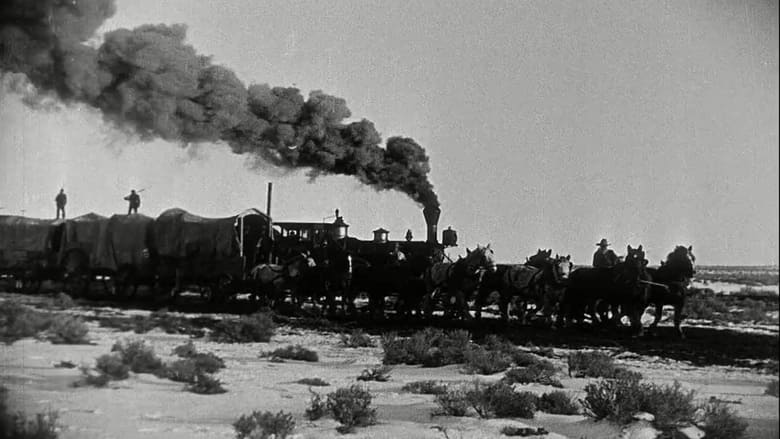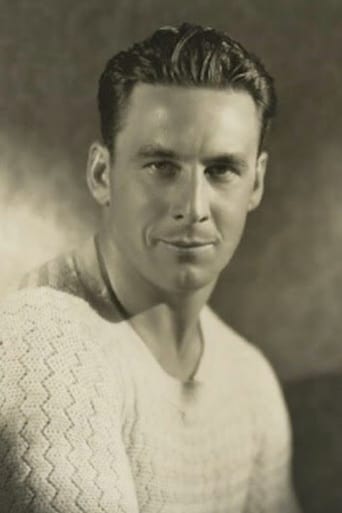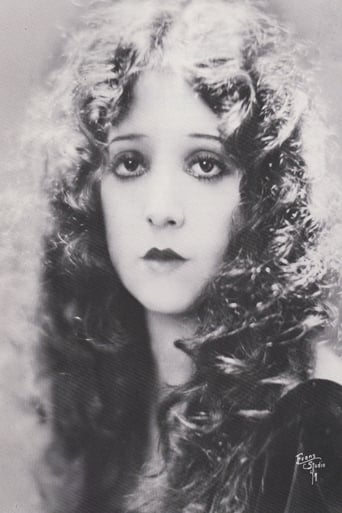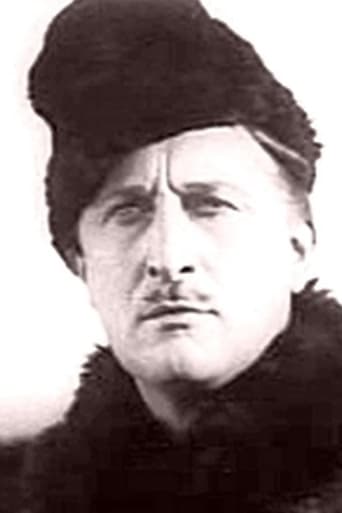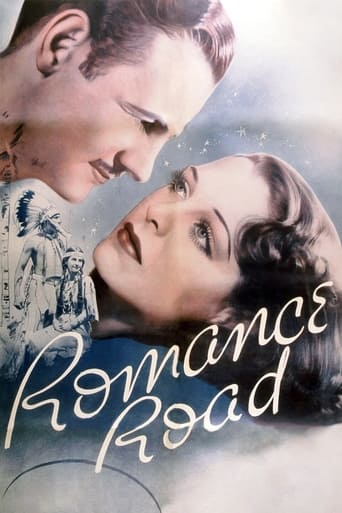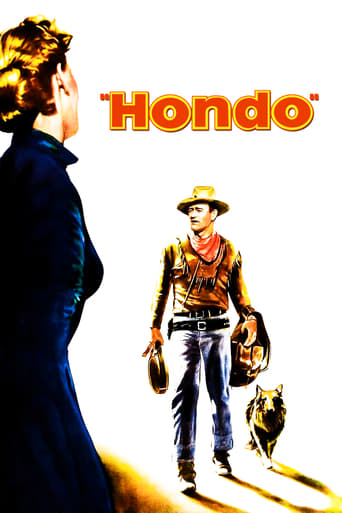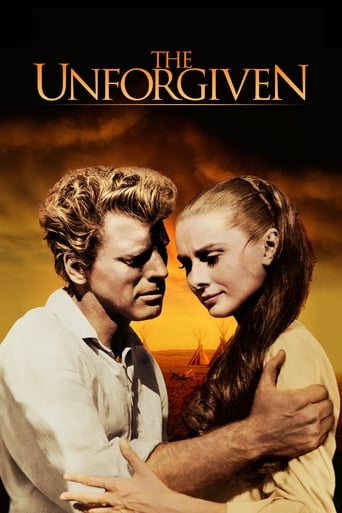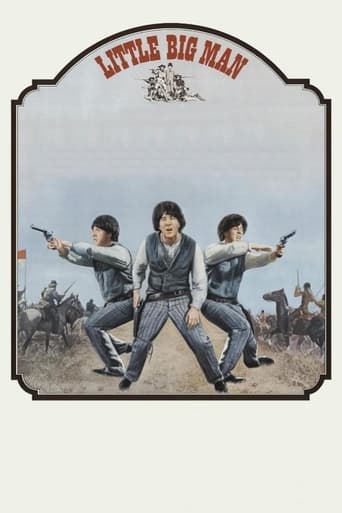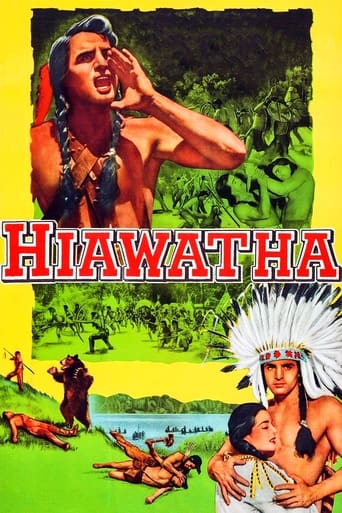The Iron Horse (1924)
Brandon, a surveyor, dreams of building a railway to the west. He sets off with his son, Davy, to survey a route. They discover a new pass which will shave 200 miles off the expected distance, but they are set upon by a party of Cheyenne. One of them, a white renegade with only two fingers on his right hand, kills Brandon and scalps him. Davy is all alone now.
Watch Trailer
Free Trial Channels
Cast


Similar titles
Reviews
I really wanted to like this movie. I feel terribly cynical trashing it, and that's why I'm giving it a middling 5. Actually, I'm giving it a 5 because there were some superb performances.
I have absolutely never seen anything like this movie before. You have to see this movie.
I think this is a new genre that they're all sort of working their way through it and haven't got all the kinks worked out yet but it's a genre that works for me.
The movie really just wants to entertain people.
. . . of THE IRON HORSE. The "Blow the Man Down"-incorporating musical score is NOT from the 1974 NOR from the 1995 releases mentioned here, but from Christopher Caliendo's composition recorded from June 28 to July 1, 2007, for the Fox 2-disc DVD release of that year, which includes the U.S. IRON HORSE permutation on Disc One, as well as the 17-minutes-shorter International IRON HORSE on Disc Two (along with a few "Bonus Features," one of which is a nine-minute piece about Caliendo's music for THE IRON HORSE). Naturally, I'm reviewing (and rating) the briefer HORSE, as director Ford always fluffed out his flicks with a half hour or two of extraneous "padding," and even THIS rendering of HORSE could stand to lose ANOTHER 20 or 30 minutes. The Transcontinental Railroad was America's "Moon Shot" of the 1800s. (Think about it: In 1961, President Kennedy ordered the Moon Shot, got gunned down a few years later, but men were on the Moon by 1969; similarly, in 1861 President Lincoln ordered the cross-country Choo Choo, got gunned down a few years later, but the track was finished in 1869.) Ford concocts a bogus lovers' spat here that delays the railroad completion by at least a year--this is as crazy as someone fabricating a flick in which a female stalker pulls up some adult diapers to race across the U.S. and wrestle her crush Neil Armstrong off the Apollo 11 Launching Pad!
Shortly after I had finished watching my first ever silent film (Alfred Hitchcok's last ever silent film:The Manxman)I found out that before he started his legendary partnership with John Wayne,director John Ford had earlier in his long career, made some very epic silent film westerns.With having read up some interesting things that Leonard Maltin has said about the film,and discovering that the U.S. cut of the film had a total running time of 149 minutes (about an hour longer than the Hitchcock film)The plot:President Abraham Lincoln announces that with the Cival War having torn America in two,he is going to try everything he possibly can to connect both parts back together.One of his main plans to binned America back together,is to build the first ever Railway system,so people can at last have the chance to travel from one part of the country,to the other.Two people,that take Lincoln's "wild" idea to heart are a father and son.During a camping trip,the father shows his son (Davy Brandon) the perfect spot for railway lines to be placed,with the area also being a "short cut",that would cut around 200 miles for the train journey's.Suddenly an angry group of Indians appear,that are strangely being led by a white man,(who only has two fingers on his right hand) appear.Getting hold of Davy's dad,the white Indian beats him up,until he is dead.After all of them at last disappear,Davy comes out of hiding,to bury his father. Years later:Congress finally give Lincoln's wild idea the opportunity to become a reality,although they also give very strict rules on the amount of time (2 years) that the railway system can have to reach completion.With there being lots of cash on offer for the building of the system,contractors (in particular,one called Bauman,who also owns a good amount of the land,which would be left untouched,if the "short cut" that Davy and his dad discovered years ago was used.)rush round to get their hands on the cash and the contracts,whilst also making sure to never mention the infamous "short cut" to anyone in Congress.After a money train is robbed which contained all of the workers rages,the very under-paid workers go on strike until their wages are sorted.With no one having any ideas on how to gather up the cash needed for the workers wages,everyone is left completely startled,when a man called Davy Brandon appears from out of no where,to tell people about a short cut he found with his dad in his childhood,which if used,would cut a huge amount of time and cost for the building of the railway.As news of this "terrifying" announcement by Brandon begins to reach the ears of the main landowner and the contractors, (one of whom,strangely has only two fingers on his right hand!)they all begin to think of ways that will guarantee them,that they will never see Davy Brandon alive again..View on the film:When I first found out,that the plot for this two and a half hour silent epic western was going to be about the creation of the first railway system in the United States,my initial uncertainties about the film perhaps turning into a very drawn out history lesson,were thankfully proved wrong.For his impressively well-paced screenplay,writer Charles Kenyon, (who is also credited for coming up with the story for the film,along with John Russell)smartly separates the story into several 20 minute sections,with each part of the film showing the very different reaction and effect that the building of the system has on people,from the investors who see the opportunity to drain a huge cash cow dry,to "the loner" Davy Brandon,who sees the new binding of the north and the south as something that his dad would have loved to help reconnect,with his extremely useful knowledges of the area.During my viewing of this fantastic film,one of the main things that kept my ears wide open was the new enchanting score by Christopher Caliendo,who has written a gripping score with a great mix of instruments that give the film a fantastic "fresh" feel,whilst always complimenting the action/or the drama that is taking place in the movie.Even though a few moments that feature early in the film strangely look as if they have been taken from some cheap stock footage,director John Ford shows here that he has an amazing eye,for the wide-open west,whilst also knowing when to slow down and to focus on some beautifully reflected moments.As I started to catch my breath from the gripping final battle,where an adult Davey Brandon finally gets revenge for his fathers murder,I began to realise that the main moment in the film that was stuck in my head,was the scene where a young Davey (stunningly played by Winston Miller) has to bury his father.Although the out line of the scene seems ripe to be turned into a melo-dramatic moment in the movie,Ford instead turns the scene into a delicate melancholy moment,which lingers long after the films thrilling final battle.Final view on the film:An extremely entertaining epic silent western,with an unexpectedly fast paced screenplay,a great,fragile performance from Winston Miller and brilliant directing from John Ford.
It's hard to know where to start with a review of this film, because it has so many different elements woven together expertly in interlocking layers. Suffice to say that in the closing scene (not a spoiler as we already know what happened at Promontory Point), a bunch of big-wigs (Leland Stanford, etc.) pose for a group photograph in front of the two locomotives (the original two that met at the actual event, if the title card is to be believed: the Jupiter from the C.P. and #116 from the U.P.). The picture is taken, but the movie viewer wonders who all these people are; as in real life, the big, important people in society get the credit and fame for a job that was done by the unimportant but very interesting little people.This movie is about those little people, pretty much all of them it sometimes seems, and in it a young John Ford does all the things right that, as an older man, he would get wrong in "Cheyenne Autumn." Ford was making "The Iron Horse" for audiences who were already familiar with the gritty realism in William S. Hart's films, so he had to give it almost a documentary feel in some parts, as another commenter noticed. There's also a lot of give-and-take between ethnic groups that at times gets pretty sharp-edged, just like reality, but it always (and sometimes very subtly) is resolved by their work on a common project, for a common goal.Ford also seems to build clichés just to blow them away. (Spoiler coming up.) The big Indian attack on workers at the end of the line goes pretty much as we expect at first, up to the point where the reinforcements arrive--no cavalry in this movie; it is fellow workers coming to the rescue, but only after a verbal brawl between the Irish and the Italians back in town, which was resolved when Texans arrived with several thousand cattle, and when they saw what was going on, stampeded them through town to force the Italians to get onto the relief train (Ford uses his excellent "run directly into the camera" view with the stampede and also a few other places in the film). See what I mean about layers? Right; back at the end of the line, the Indians are still whooping it up in a circle around the workers who are holed up under the cars. Reinforcements arrive and drive the Indians off. But then the Indians regroup, line up, and charge, cavalry style. Things look desperate for our heroes but they are finally rescued...by more Indians.It's a well-prepared surprise and that is so enjoyable. There are no deus ex machina moments in "The Iron Horse"; you just start wondering what is going to happen next and watch it all come together perfectly.Other excellent points include the casting of Charles Edward Bull as Lincoln (what else did he do, I wonder; his IMDb bio is empty). The bar fight scene is excellent, too, and so is the death match between Davy and Two Fingers (which O'Brien's training as a fighter makes especially realistic).By the way, Miriam doesn't care that Davy went into a bar; her problem is that Davy broke his word by fighting Jesson after telling her he would not. It's a really stupid move on her part, and the audience recognizes that - kind of an old melodrama touch, but it keeps the story moving.It's interesting to see Ford's explanation of the buffalo hunts in this movie (they were food for the workers) and contrast it to the one suggested in "The Searchers" (they were slaughtered to starve the native people off the land).Well, enough. See this movie. It's over 2 hours long (how many reels was that, I wonder) and that is just the right length.
THE IRON HORSE (Fox, 1924), directed by John Ford, is an story set during the middle of the 19th century America about the building of the first Transcontinental Railroad. One of the very best examples of a lavish scale western produced during the silent era, said to be the answer to Paramount's earlier production of THE COVERED WAGON (1923), but most importantly, the first major project for Ford after nearly a decade in the director's chair to now gain the recognition he truly deserves.The story opens with a prologue set in Springfield, Ill., 1853, revolving around Davy Brandon, first as a youngster (Winston Miller) with deep affection towards Miriam Marsh (Peggy Cartwright), his childhood sweetheart. Davy's father (James Gordon) is a surveyor who dreams about the crossing of the western wilderness, while Miriam's father, Thomas Marsh (William Walling), is a skeptic. However, one of the citizens, Abraham Lincoln (Charles Edward Bull), believes in this man's theory and knows he'll accomplish his means. Setting out to accompany his father on a mission to survey an appropriate route through the mountains for the coming railroad, Davy bids a tearful farewell to Miriam. During their westward journey, Davy, who is hidden away because of foreseen danger, witnesses the brutal killing of his father by a white man dressed up as an Indian whose only identification if the loss of a thumb and two fingers on his right hand. After burying his father, Davy is taken in by a passing scouting party. A decade later, 1862, Abraham Lincoln is president of the United States; Davy (George O'Brien) is a Pony Express rider out to fulfill his father's dream leading into the building of the Transcontinental Railroad; and Miriam (Madge Bellamy), now engaged to Peter Jesson (Cyril Chadwick), an Eastern surveyor working for her father actually working for Deroux (Fred Kohler), the richest landowner, who stands to profit if the railroad goes through instead of through the pass. After being reunited with Miriam, Jesson finds himself in stiff competition. The two men become bitter enemies, especially after Jesson's attempts in doing away with him. Matters become complex until the golden spike gets hammered into the rail on that historic day of 1869 as east meets west through the continental railroad.In the supporting cast are Gladys Hulett (Ruby); Jack O'Brien (Dinny); three musketeer pals of J. Farrell MacDonald (Corporal Casey); Francis Powers (Sergeant Slattery); and James Welch (Private Schultz), as well as historical figures of Buffalo Bill Cody, Wild Bill Hickock and John Hay enacted by George Wagner, John Padjan and Stanhope Wheatcroft.THE IRON HORSE (title indicating the locomotive train) plays like a D.W. Griffith production with prologue, historical figures, flashbacks and epilogue, and like a screen adaptation to an Edna Ferber novel telling its story through the passage of time, along with soap-opera ingredients (complicated love triangle), but no usual conclusions of central characters going through the white hair and wrinkles aging process. Overall, this is John Ford's storytelling, cliché as it may be, placing fictional characters against historic setting, along with the oft-told murder-mystery subplot of a son out to avenge his father's killer, a historical movie that's become an important part of cinema history. Ford, the future four time Academy Award winning director, with a handful of motion pictures to his credit, best known for westerns, would provide similar themes in his future film-making. As popular as THE IRON HORSE was back in 1924, it's amazing that Ford didn't attempt doing a remake, especially in 1939 when westerns reached it peak of popularity. It took Cecil B. DeMille to attempt a similar story with UNION PACIFIC (Paramount, 1939) starring Barbara Stanwyck and Joel McCrea. Like THE IRON HORSE, UNION PACIFIC, which tells its story in over two hours, features villains, Indian massacres and thousands of extras. George O'Brien, a rugged actor, was an ideal choice for the role of Davy Brandon. Although he worked under Ford's direction numerous times in latter years, and showed his capability as a dramatic actor in F.W. Murnau's SUNRISE (1927), he never achieved major stardom. He did work steadily mostly in "B" westerns through the early 1950s. Co-star Madge Bellamy offers her typical heroine performance, caught between two men who vie for her affection, but is far from being a strong character. While the acting overall is satisfactory, from today's viewpoint, some heavy melodramatics as the method of fainting by youngster Davy after witnessing his father's massacre, or Bellamy's performance in general, might provoke some laughter. Scenes such as these can be overlooked by great location scenery as Monument Valley, a race against time and action scenes typically found in Ford westerns.Television history to THE IRON HORSE began when it became one of the movies from the Paul Killiam collection to air on public television's 13-week series of "The Silent Years" (June-September 1975), hosted by Lillian Gish. In her profile about THE IRON HORSE (accompanied by an excellent piano score by William Perry), Gish talks about its location shooting in the Nevada desert, the use of 100 cooks to feed the huge cast, and 5,000 extras consisting of 3,000 railway workers, 1,000 Chinese laborers, many horses and steers. Decades later, THE IRON HORSE made it to the American Movie Classics (1997-1999) and Turner Classic Movies (TCM premiere December 9, 2007 ) accompanied by orchestral score with 15 minutes of additional footage as opposed to the 119 minutes presented on both "The Silent Years," and the Western Channel in 2001. Distributed to home video Critic's Choice in 1997, availability on DVD came a decade later.THE IRON HORSE may not be historically accurate as promised through its opening inter-titles, but it's sure an ambitious John Ford production to still be entertaining today. (****)


